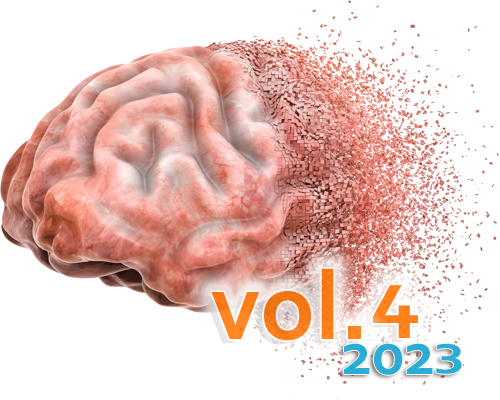Neurotrauma: 2023 Update
DOI:
https://doi.org/10.17879/freeneuropathology-2023-5076Keywords:
Traumatic brain injury, Chronic traumatic encephalopathy, Tau, TDP-43, APOEAbstract
2022 was a productive year for research in traumatic brain injury (TBI) and resultant neuropathology. After an extensive review, we present related studies and publications which we felt were of particular importance to the neuropathology community. First, 2022 was highlighted by important advancements in the diagnosis and, moreover, our understanding of chronic traumatic encephalopathy (CTE). Important publications include a pair concluding that CTE primarily concerns neuronal accumulation of phosphorylated tau (ptau), but that glial ptau accumulation often helps to facilitate diagnosis. In addition, a new large community study from Australia continues the indication that CTE is relatively uncommon in the community, and the first large-cohort study on brains of military personnel similarly demonstrates that CTE appears to be uncommon among service members and does not appear to explain high rates of neuropsychiatric sequelae suffered by the warfighter. The causation of CTE by impact-type TBI was supported by the application of the Bradford Hill criteria, within the brains of headbutting bovids, and interestingly within an artificial head model exposed to linear impact. Finally, a large-scale analysis of APOE genotypes contends that gene status may influence CTE pathology and outcomes. In experimental animal work, a study using mouse models provided important evidence that TDP-43 facilitates neurodegenerative pathology and is implicated in cognitive dysfunction following TBI, and another study using a swine model for concussion demonstrated that evidence that axonal sodium channel disruption may be a driver of neurologic dysfunction after concussion. Finally, we end with memoriam to Dr. John Q. Trojanowski, a giant of neurodegenerative research and an important contributor to the neurotrauma literature, who we lost in 2022.
Metrics
Published
How to Cite
Issue
Section
License
Copyright (c) 2023 David S. Priemer, Daniel P. Perl

This work is licensed under a Creative Commons Attribution 4.0 International License.
Papers are published open access under the Creative Commons BY 4.0 license. This license lets others distribute, remix, adapt, and build upon your work, even commercially, as long as they credit you for the original creation. Data included in the article are made available under the CC0 1.0 Public Domain Dedication waiver, unless otherwise stated, meaning that all copyrights are waived.



















